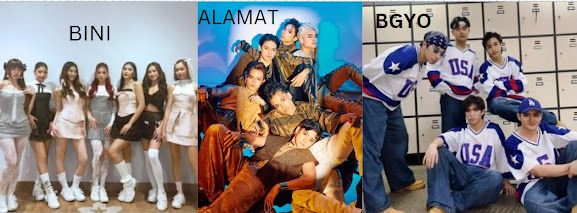The Philippine music scene has always been a rich tapestry of sounds and stories, but the recent emergence of P-Pop (Pinoy Pop) has added a new, pulsating rhythm to the nation's heartbeat. P-Pop, with its infectious energy and distinctive Filipino flair, has captured the hearts of fans both locally and internationally. At the forefront of this musical revolution is SB19, a group that has not only set the stage but also paved the way for the genre's explosive growth.
The Rise of P-Pop
P-Pop's roots can be traced back to the 1960s with the fame of Original Pilipino Music (OPM pop), evolving through the decades with various influences and styles. However, the advent of SB19 in 2018
marked a turning point for the genre. Trained by a Korean entertainment company, SB19 brought a level of professionalism, talent, and production quality that was previously unseen in the local scene.
marked a turning point for the genre. Trained by a Korean entertainment company, SB19 brought a level of professionalism, talent, and production quality that was previously unseen in the local scene.
SB19: The Trailblazers of P-Pop
SB19's rise to fame was meteoric, thanks to their dedication, hard work, and the support of their passionate fanbase, A'TIN. Their music, which includes powerful vocals, dynamic choreography, and a blend of Filipino and international styles, has led them to become the first Filipino act to chart on the Billboard 2019 Next Big Sound Chart and receive a Billboard Music Awards nomination in 2021.
The Cultural Impact of P-Pop
P-Pop is more than just a genre; it's a cultural movement. It promotes Filipino ethnic and linguistic diversity by incorporating regional dialects and languages into its music. The genre also serves as a platform for messages of empowerment and Pinoy pride, resonating with audiences across generations.
 |
| image credit to BINI IG (instagram.com/bini_ph/ ) , Alamat FB (facebook.com/official.alamat/ ) , BGYO IG (instagram.com/bgyo_ph/ ) |
The Future of P-Pop
The success of SB19 has opened doors for other P-Pop acts like BINI, BGYO, and Alamat, who are also making waves in the industry. With each group bringing their unique sound and style, P-Pop is not just a passing trend but a genre that's here to stay and evolve.
P-Pop and the Philippine Economy
The rise of P-Pop isn't just a win for music; it's a potential boost for the Philippine economy. As P-Pop gains international recognition, it can attract more investment, tourism, and global interest in Filipino culture and talent.
Embracing the Beat
As we look to the future, it's clear that P-Pop, led by pioneers like SB19, is carving out a significant place in the world of music. It's a testament to the creativity, resilience, and spirit of the Filipino people. The beat goes on, and the world is listening.
Are you part of the P-Pop wave? How do you think SB19 and other P-Pop groups are shaping the music industry in the Philippines? Let's chat about it in the comments!

**Artists can be followed by tapping their names on the blog.
These are the official pages for SB19.










.png)
